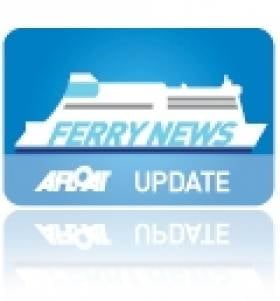Displaying items by tag: SIPTU
Strike Action to Take Place at Whiddy Island Oil Terminal
Workers who are members of Ireland's largest trade union, SIPTU have notified Zenith Energy Bantry Bay Terminals located on Cork's south-west coast, that they will take strike action next month.
The strike according to the Irish Examiner, is set to take place on 13 December at Whiddy Island where the storage facility provides for 1.4m cubic metres of crude oil,diesel,kerosene and petrol.
For more than 50 years the terminal has played a critical role in European energy storage and which has the ability to receive vessels up to the size of Vary Large Crude Carriers (VLCC) at their dedicated single-point mooring as Afloat's photograph depicts above.
The dispute concerns compulsory redundancies at the terminal in which the US based (Houston, Texas) energy company as Afloat reported in 2015 acquired the Whiddy terminal from Phillips66.
Siptu's organiser Willie Noone said “This action results from the decision of the company to dismiss workers with long service on Wednesday, November 30, while planning to employ contractors on an ongoing basis to do their work”
Zenith which employs 31 in permanent positions at the terminal is undertaking a restructuring process which involves implementing five redundancies.
In additon to the Irish terminal, Zenith has a terminal in the Netherlands in Amstedam and throughout the USA.
Urgent Meeting Called By Unions With Irish Ferries to Discuss Pay Plans for W.B. Yeats
#FerryNews - Irish and British unions have called for an urgent meeting with Irish Ferries to discuss pay plans for a new 'super-ferry' due this autumn.
SIPTU, RMT and Nautilus reports the Irish Examiner are seeking assurances over conditions for the crew of the W.B. Yeats, which is expected to join the Dublin-Holyhead route in September.
SIPTU's Jerry Brennan says they want to ensure that new terms and conditions will not undercut existing arrangements on the Irish Sea.
To read a comment by the SIPTU representative, click here.
National Disabled Angling Centre to Stay Open Pending Review
#ANGLING - The National Disabled Angling Facility at Aughrim in Co Wicklow is to remain open following an 11th-hour agreement last month, The Irish Times reports.
A deal reached between Fás, Siptu and the centre's staff will retain all 23 jobs with a 25% pay cut and see the premises stay open until a "review" is published in March.
Opened by then President Mary Robinson in 1996, the facility is operated as a Community Employment Fás scheme and has been an invaluable amenity for disabled anglers nationwide.
Ferry Operator Consider Court Finding
#FERRY NEWS – Senior managers in Stena Line are considering today the implications of a Labour Court recommendation that it increase redundancy terms for 39 workers at its Dún Laoghaire Harbour operation, the Irish Times reports.
The Labour Court rejected the workers' claim for automatic redeployment from the Dún Laoghaire service to Stena's Dublin Port – Holyhead route operation.
Stena's Dublin Port operation is managed by a subcontractor RoRo Services Dublin Ltd, which Stena said had no vacancies.
The ferry company has said the Dún Laoghaire -Holyhead service, which is now seasonal, will reopen in April, as previously reported on Afloat.ie. However, the company told the Labour Court there is currently no work for staff in the south Dublin port.
Workers who are members of SIPTU have been seeking redeployment to Dublin Port or enhanced redundancy payments.
However, while the Labour Court did recommend enhanced redundancy payments, the enhancement is less than that sought by the workers.
In previous redundancies at the company offered three weeks' pay per year of service, inclusive of statutory redundancy. In addition, they had received ex-gratia payments of €18,000 plus an additional €500 per year of service. The Labour Court recommended the €500 per year of service payment should be increased to €1,050 per year of service.
The Labour Court recommended that the company confirm staff in Dún Laoghaire would be given first call on jobs when the Dún Laoghaire service resumes in April.
A Stena spokesperson said senior management at the company were considering the recommendation and would make a statement later in the day.































































